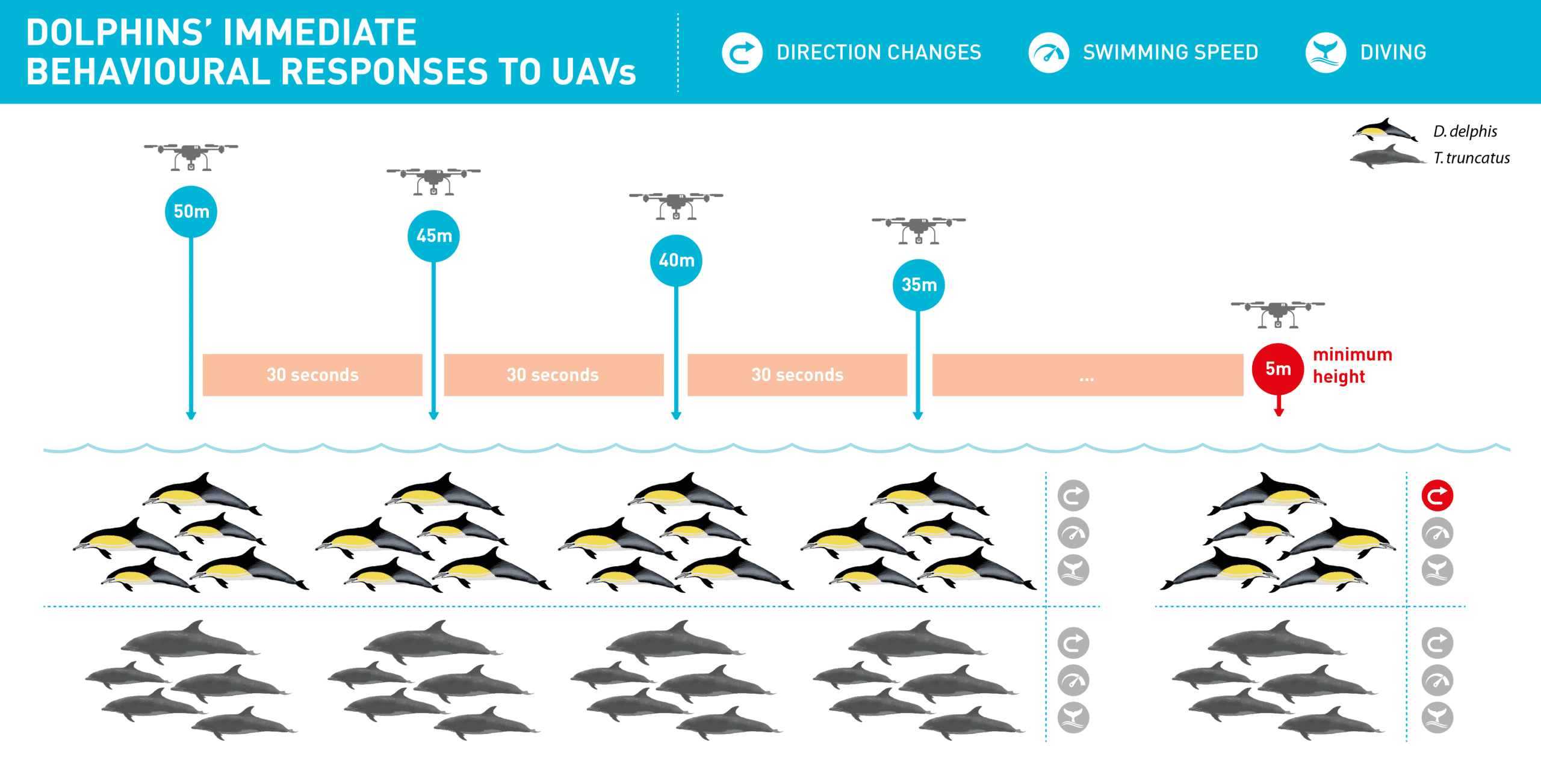
Artigo científico sobre as respostas comportamentais de Veículos Aéreos Não Tripulados (drones) em pequenos cetáceos, principalmente no golfinho-comum e no golfinho-roaz.
Castro, Joana; Borges, Francisco O.; Cid, André; Laborde, Marina I.; Rosa, Rui; Pearson, Heidi C. 2021. “Assessing the Behavioural Responses of Small Cetaceans to Unmanned Aerial Vehicles” Remote Sens. 2021, 13(1), 156;
Unmanned Aerial Vehicles (UAVs), or drones, have recently emerged as a relatively affordable and accessible method for studying wildlife. Vertical Take-off and Landing (VTOL) UAVs are appropriate for morphometric, behavioural, abundance and demographic studies of marine mammals, providing a stable, nonintrusive and highly manoeuvrable platform. Previous studies using VTOL UAVs have been conducted on various marine mammal species, but specific studies regarding behavioural responses to these devices are limited and scarce. The aim of this study was to evaluate the immediate behavioural responses of common (Delphinus delphis) and bottlenose (Tursiops truncatus) dolphins to a VTOL UAV flown at different altitudes. A multirotor (quadcopter) UAV with an attached GoPro camera was used. Once a dolphin group was located, the UAV was flown at a starting height of 50 m directly above the group, subsequently descending 5 m every 30 s until reaching 5 m. We assessed three behavioural responses to a VTOL UAV at different heights: (i) direction changes, (ii) swimming speed and (iii) diving. Responses by D. delphis (n = 15) and T. truncatus (n = 10) groups were analysed separately. There were no significant responses of T. truncatus to any of the studied variables. For D. delphis, however, there were statistically significant changes in direction when the UAV was flown at a height of 5 m. Our results indicate that UAVs do not induce immediate behavioural responses in common or bottlenose dolphins when flown at heights > 5 m, demonstrating that the use of VTOL UAVs to study dolphins has minimal impact on the animals. However, we advise the use of the precautionary principle when interpreting these results as characteristics of this study site (e.g., high whale-watching activity) may have habituated dolphins to anthropogenic disturbance.
Consulta o artigo sobre o impacto dos drones no comportamento de golfinhos.
